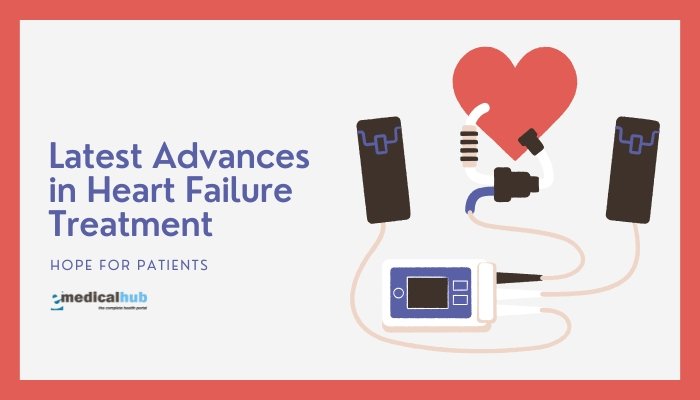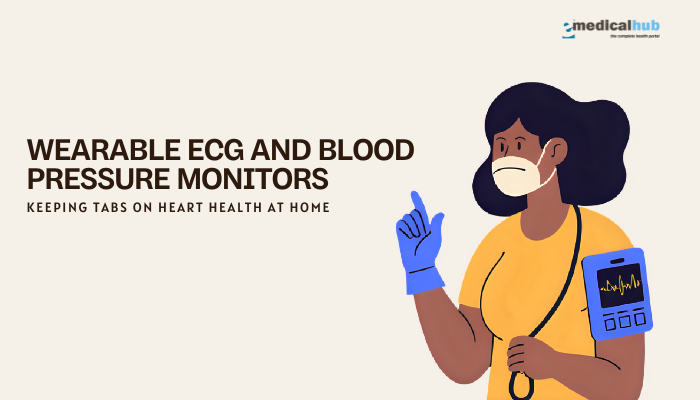Introduction
Heart failure is a condition in which the heart’s ability to pump blood does not meet the body’s needs. This ongoing issue affects millions worldwide. Years ago, heart failure was thought to be an irreversible condition leading to steady deterioration.
Today, new treatments, devices, and clinical strategies give hope to patients and families. These advances target different problems within the heart and circulation, aiming to improve quality of life and survival rates.
This article reviews the latest heart failure treatments and explains how they can benefit patients. The content uses short sentences and direct language to provide clarity.
Bullet points and tables highlight key information. Essential references are placed at the end. Readers will learn about updated medication approaches, modern devices, surgical options, lifestyle factors, and how personalized care improves results.
Understanding Heart Failure
Heart failure arises when the heart cannot pump sufficient blood to meet the body’s requirements. There are two main categories:
- Heart Failure with Reduced Ejection Fraction (HFrEF)
The heart muscle is weak, and it cannot contract effectively. The ejection fraction, which measures how much blood is pumped with each beat, is low. - Heart Failure with Preserved Ejection Fraction (HFpEF)
The heart muscle is stiff and does not relax well, so filling is impaired. Although the ejection fraction appears normal, the heart still fails to deliver adequate blood flow.
Common triggers include coronary artery disease, high blood pressure, diabetes, and structural problems in the heart valves. Symptoms often include:
- Shortness of breath
- Fatigue and reduced exercise capacity
- Swelling in the ankles or feet (edema)
- Persistent coughing or wheezing
Despite treatment progress, heart failure remains serious. Early detection and intervention can improve outcomes. Patients with mild symptoms may respond well to medications and lifestyle changes, while others might need advanced therapies such as mechanical devices or transplants.
Traditional Treatment Approaches
For years, treatment for heart failure included certain cornerstone therapies:
- Diuretics
Help remove excess fluid, reducing edema and easing breathing. Loop diuretics are widely used. - Angiotensin-Converting Enzyme (ACE) Inhibitors or Angiotensin II Receptor Blockers (ARBs)
Lower blood pressure and reduce stress on the heart by blocking harmful hormonal pathways. - Beta-Blockers
Slow heart rate and lower blood pressure, giving the heart muscle a chance to recover and function more efficiently. - Aldosterone Antagonists
Block aldosterone, a hormone that leads to sodium and water retention. This helps control fluid buildup.
These medications remain key parts of management. However, heart failure therapies have expanded significantly in recent years. New drug classes and treatment strategies can offer better relief for individuals who need additional measures.
Emerging and Evolving Medical Therapies
Angiotensin Receptor-Neprilysin Inhibitors (ARNIs)
Mechanism
ARNIs combine two actions: blocking the angiotensin II receptor (similar to ARBs) and inhibiting neprilysin, an enzyme that breaks down beneficial peptides. By blocking neprilysin, levels of natriuretic peptides rise, which helps reduce fluid overload and vessel constriction.
Clinical Impact
Patients who switch from ACE inhibitors or ARBs to an ARNI often experience fewer hospital admissions and improved survival. ARNIs are now recommended for individuals with HFrEF who still have symptoms despite standard therapies.
SGLT2 Inhibitors
Background
Originally introduced for type 2 diabetes, SGLT2 inhibitors have shown substantial benefits in heart failure, even in those without diabetes.
How They Work
They reduce glucose reabsorption in the kidneys, causing the body to excrete more sugar and water in the urine. This helps lower fluid volume and reduces heart stress. They may also improve the heart’s energy metabolism.
Key Points
- Lower rates of hospitalization
- Better cardiovascular outcomes
- Usable in HFrEF and some evidence also shows promise in HFpEF
SGLT2 inhibitors are increasingly considered a main component of heart failure management.
Vericiguat
Mode of Action
Vericiguat stimulates guanylate cyclase, improving the production of cyclic GMP in the smooth muscle cells of blood vessels. This leads to vasodilation and helps the heart pump more efficiently.
Indications
Patients with chronic heart failure who remain symptomatic may benefit when standard therapies do not offer enough relief. This drug can reduce hospitalizations and extend stability in certain individuals.
Omecamtiv Mecarbil
Unique Approach
Omecamtiv mecarbil is a cardiac myotrope. It increases the efficiency of the heart’s contraction without raising calcium levels significantly (which can cause dangerous arrhythmias).
Clinical Trials
While still being studied, early results suggest it can enhance cardiac output and lower the likelihood of hospitalization. It targets the mechanical function of the heart muscle, making it distinct from other agents that primarily focus on hormonal or fluid aspects.
Iron Supplements and IV Iron Therapy
Why Iron Matters
Iron deficiency is common in heart failure and can worsen fatigue and exercise capacity. Many patients do not realize they lack sufficient iron.
Benefits of Correction
IV iron supplementation can improve energy levels, exercise tolerance, and overall quality of life. It may lower hospitalization risk. Testing iron status is now recommended in many heart failure guidelines.
Advanced Devices for Heart Failure
Beyond medications, many people benefit from devices that support or replace certain heart functions. The latest device therapies address electrical conduction, pressure monitoring, and mechanical support.
Cardiac Resynchronization Therapy (CRT)
How It Works
Some heart failure patients have an uncoordinated heartbeat due to conduction disturbances like left bundle branch block. CRT uses a special pacemaker to synchronize the ventricles, improving pump efficiency.
Outcomes
- Better exercise capacity
- Reduced hospital stays
- Longer survival in carefully chosen individuals
Implantable Cardioverter-Defibrillators (ICDs)
Purpose
Patients with weakened heart muscle are prone to dangerous arrhythmias. ICDs monitor heart rhythm and deliver a shock if life-threatening rhythms arise.
Advantages
ICDs help prevent sudden cardiac death. They are often placed in patients with significantly reduced ejection fractions or those who survived previous cardiac arrests.
Remote Hemodynamic Monitoring
Concept
Small sensors, often implanted in the pulmonary artery, track pressure changes and send data to healthcare providers remotely. Elevated pulmonary artery pressure may signal impending fluid buildup or exacerbation of heart failure.
Practical Use
By spotting problems early, clinicians can adjust medications or request a check-up before severe symptoms develop. This approach has reduced hospitalizations in specific populations.
Left Ventricular Assist Devices (LVADs)
Role
An LVAD is a mechanical pump supporting blood flow when the left ventricle is too weak. It can serve as a bridge to a heart transplant or long-term therapy for individuals ineligible for transplant.
Quality of Life
Modern LVADs are smaller and more reliable than earlier models. Patients often experience prolonged survival, greater activity tolerance, and symptom relief.
Surgical and Interventional Procedures
For some, medical therapy and device implantation are not enough. Certain surgical or interventional options can improve structure and function of the heart or serve as definitive solutions.
Heart Transplant
Standard of Care for End-Stage Heart Failure
When medications and devices fail, a transplant is the primary option for those who qualify. Survival and quality of life have improved with better surgical techniques and immunosuppressive drugs.
Challenges
- Limited donor organs
- Risk of rejection
- Lifelong immunosuppression
- Need for strict follow-up
Despite these challenges, a transplant can add years of active life for many recipients.
Valve Repair or Replacement
Connection to Heart Failure
Damaged valves (mitral or aortic) can worsen or trigger heart failure. Correcting valve problems can restore proper blood flow and ease the heart’s workload.
Techniques
- Minimally invasive valve repair
- Transcatheter aortic valve replacement (TAVR)
- Mechanical or bioprosthetic valves
These approaches might resolve a key structural problem and reduce symptoms significantly.
Ventricular Reconstruction
Goal
Some patients have changes in the shape of their ventricles after heart attacks. Surgical remodeling or reconstruction can help the heart pump more effectively and reduce complications.
Novel Catheter-Based Interventions
- MitraClip and Similar Devices
Used to repair certain types of mitral valve regurgitation without open surgery. - Tricuspid Valve Interventions
Early devices aim to correct tricuspid regurgitation, which often goes unnoticed but can worsen heart failure.
Such interventions expand treatment choices for individuals at high risk for conventional surgery.
Personalized Treatment and Precision Medicine
Heart failure can stem from different root causes, so a single approach rarely works for everyone. Personalized treatment strategies look at genetics, biomarkers, and coexisting conditions. This more detailed view helps guide medication choices, device selection, and follow-up schedules.
Biomarker Testing
- B-type Natriuretic Peptide (BNP) and NT-proBNP
High levels indicate strain on the heart. These markers help evaluate therapy response. - Cardiac Troponins
Can show ongoing heart muscle injury. - Genetic Markers
Genetic testing can identify inherited forms of cardiomyopathy or conduction abnormalities.
Guided Therapy
Patients with elevated BNP might need more aggressive fluid management or advanced therapy. Those showing genetic variants could benefit from specific drugs targeting metabolic pathways. Ongoing research seeks to refine these targeted interventions further.
Lifestyle and Rehabilitation
Though new drugs and devices get attention, lifestyle and rehabilitation remain vital to success. A comprehensive program addresses diet, exercise, mental health, and close monitoring.
Diet and Nutrition
- Sodium Reduction
High salt intake leads to fluid retention. Simple steps include limiting processed foods and restaurant meals. - Balanced Meal Patterns
Emphasizing whole grains, fruits, vegetables, and lean proteins helps maintain healthy weight and reduce stress on the heart. - Adequate Protein
Some heart failure patients lose muscle mass easily. A balanced intake of protein supports strength.
Exercise Programs
Cardiac Rehabilitation
Structured rehab programs can enhance functional capacity, reduce symptoms, and lower the risk of future hospital stays. Exercises often include walking, cycling, or low-impact aerobics.
Benefits
- Improved endurance
- Better circulation
- Lower stress levels
- Enhanced quality of life
Stress Management
Chronic stress hormones can elevate heart rate and blood pressure, further straining the heart. Relaxation methods, counseling, or mindfulness may help.
Smoking Cessation and Alcohol Limitation
- Smoking damages blood vessels and reduces oxygen delivery. Quitting is crucial.
- Excess Alcohol can impair heart muscle and complicate medication regimens. Limiting intake is advisable.
Comorbidities and Integrated Care
Heart failure rarely exists alone. Many patients also have conditions like diabetes, lung disease, or kidney dysfunction. Integrated care models ensure that all health problems are addressed together.
Diabetes Management
High blood sugar can accelerate vascular damage and fluid retention. Modern regimens, including SGLT2 inhibitors, can support both blood sugar control and heart function.
Kidney Health
Reduced kidney function is common in heart failure. Diuretic dosing must be carefully balanced to prevent electrolyte imbalances or further kidney damage.
Anemia and Nutritional Deficiencies
Low red blood cell counts and inadequate nutrients can reduce exercise capacity and weaken the body. Correcting these issues might boost energy and symptom control.
Respiratory Disorders
Some heart failure patients have overlap with lung conditions such as chronic obstructive pulmonary disease (COPD). Coordinated treatment of both conditions is essential to preserve breathing comfort.
Innovations on the Horizon
Researchers continue to refine tools for diagnosing and treating heart failure. Potential breakthroughs include:
- Gene Therapy
Aims to fix or modify genes tied to inherited heart diseases. Trials focus on ways to enhance muscle performance. - Stem Cell Therapy
Investigates the use of regenerative cells to restore damaged myocardium. Early results show mixed outcomes, but research is ongoing. - Advanced Remotes and Wearables
Wearable monitors that track heart rhythm, oxygen saturation, and blood pressure in real-time. Data can be shared with providers to detect problems before they worsen. - Machine Learning
Algorithms may help predict heart failure exacerbations and tailor treatment. Machine learning can examine patterns in large patient databases to propose personalized regimens.
While it may take time before these innovations are widely used, they hold promise for more precise, effective care.
Table: Comparing Key Advanced Therapies
| Therapy | Primary Use | Potential Benefits | Considerations |
| ARNIs | Replace ACE inhibitors/ARBs for HFrEF | Reduced hospital admissions, improved survival | Transition from ACE inhibitors requires a brief washout |
| SGLT2 Inhibitors | Lower glucose reabsorption, beneficial in HFrEF/HFpEF | Fewer hospital stays, heart-protective even in non-diabetics | Monitor kidney function, watch for urinary infections |
| LVADs | Mechanical circulatory support in advanced disease | Extended survival, better quality of life when waiting for transplant | Surgical procedure, ongoing device maintenance |
| CRT Devices | Resynchronize ventricle pumping in conduction delays | Better cardiac output, reduced symptoms, improved survival | Suited for patients with specific ECG abnormalities |
| ICDs | Prevent sudden cardiac death in weak heart muscle | Automatic detection and correction of dangerous arrhythmias | Does not improve pumping ability, but saves from fatal rhythms |
| Vericiguat | Stimulates guanylate cyclase, lowers vascular tension | May reduce hospitalizations in chronic heart failure | Usually added in advanced cases after other therapy |
Patient Engagement and Education
Empowering patients is a key part of modern heart failure care. Informed patients who understand their condition, medications, and lifestyle changes can take ownership of their health.
Shared Decision-Making
Doctors discuss options, outcomes, and side effects with patients, guiding them to the best strategy. Examples include:
- Choosing a new medication class (like SGLT2 inhibitors or ARNI)
- Deciding on device implantation (CRT or ICD)
- Setting personal goals (weight reduction, sodium control)
Digital Health Tools
Apps and remote monitoring can remind patients to take medications and track vital signs. This immediate feedback can prompt timely communication with healthcare teams.
Support Groups and Counseling
Chronic illnesses take an emotional toll. Group sessions or one-on-one counseling provides encouragement. Patients learn coping skills and hear success stories. These psychological supports often improve adherence to treatment.
Real-World Cases
- Patient with HFrEF and Diabetes
Started on SGLT2 inhibitor in addition to beta-blocker and ACE inhibitor. Showed improved exercise capacity, fewer fluid overload episodes, and better glucose control. - Patient with Persistent Symptoms Despite Standard Care
Transitioned from ACE inhibitor to ARNI. Reported reduced fatigue, better breathing, and lower hospital visits. - Patient in End-Stage Heart Failure
Implanted LVAD while waiting for a heart transplant. The device improved daily function and helped stabilize condition until a suitable donor was found.
These examples highlight how therapy choices depend on individual needs and responses.
Future Directions in Heart Failure Management
- Integrated Care Teams
Collaboration among cardiologists, primary doctors, nurses, pharmacists, nutritionists, and mental health professionals can streamline care. - Early Screening
Earlier detection of heart failure or its risk factors could slow progression. People with hypertension, diabetes, or a family history of cardiomyopathy may benefit from regular heart check-ups. - Longer-Term Data on Novel Therapies
Ongoing clinical trials and registries collect data on safety, cost-effectiveness, and best uses for advanced treatments. - Combination Treatments
Trials are looking at combining SGLT2 inhibitors with ARNI or using multiple targeted therapies at once. Such multipronged approaches may further enhance survival.
Conclusion
Heart failure treatments have evolved rapidly. New medications like ARNIs, SGLT2 inhibitors, and myotropes are reshaping therapy. Advanced devices, from remote pressure sensors to sophisticated LVADs, extend life and ease symptoms. Less invasive valve procedures and personalized approaches build on these developments. Each patient’s journey is unique, so a combination of lifestyle, medication, and possible device or surgical interventions typically works best.
Being informed about the latest options empowers patients to partner with their medical teams. Though heart failure can pose challenges, modern therapies and proactive care create real reasons for hope. Early detection, timely intervention, and consistent follow-up can transform the outlook for many individuals living with heart failure.
References
- Yancy CW, Jessup M. Update on the spectrum of heart failure. J Am Coll Cardiol. 2020;76(14):1694-707.
- McMurray JJ, Packer M. Evolving therapies for HFrEF: Emphasis on ARNI and SGLT2 inhibitors. Circulation. 2021;143(11):1037-50.
- Heidenreich PA, Bozkurt B. Treatment goals in heart failure: A contemporary overview. Heart Fail Clin. 2020;16(4):545-57.
- Solomon SD, Claggett B. Use of SGLT2 inhibitors across the heart failure spectrum. Eur Heart J. 2021;42(44):4349-57.
- Armstrong PW, Pieske B. Vericiguat for heart failure: Mechanism and clinical data. Lancet. 2020;396(10262):791-8.
- Teerlink JR, Clarke CP. Omecamtiv mecarbil: A new approach to improving cardiac contractility. J Am Heart Assoc. 2019;8(12):e011164.
- Ponikowski P, Voors AA. Importance of iron deficiency in heart failure. Eur J Heart Fail. 2020;22(11):2007-14.
- Rose J, White M. Device-based approaches in advanced heart failure: LVAD and beyond. Curr Cardiol Rep. 2021;23(5):53.
- Epstein AE, DiMarco JP. ICDs: Indications and outcomes in heart failure. Heart Rhythm. 2020;17(5):e130-7.
- Augustin D, Yarboro LT. Heart transplant and mechanical support: Update in end-stage heart failure management. Curr Opin Organ Transplant. 2021;26(3):274-80.
- Maisel AS, Bhalla V. Biomarkers in heart failure: Role of BNP and troponin. Am J Cardiol. 2019;123(2):185-92.
- Mentz RJ, O’Connor CM. Cardiac rehabilitation in heart failure: A fundamental therapy. J Am Coll Cardiol. 2020;75(23):2993-3002.






